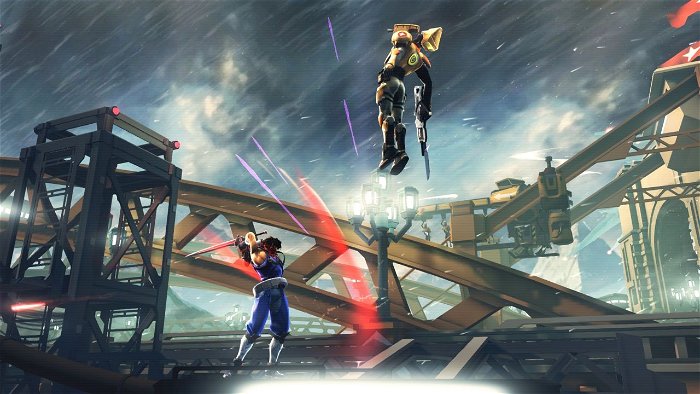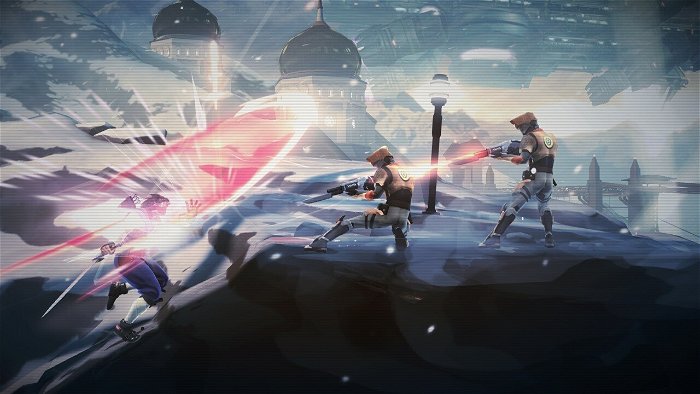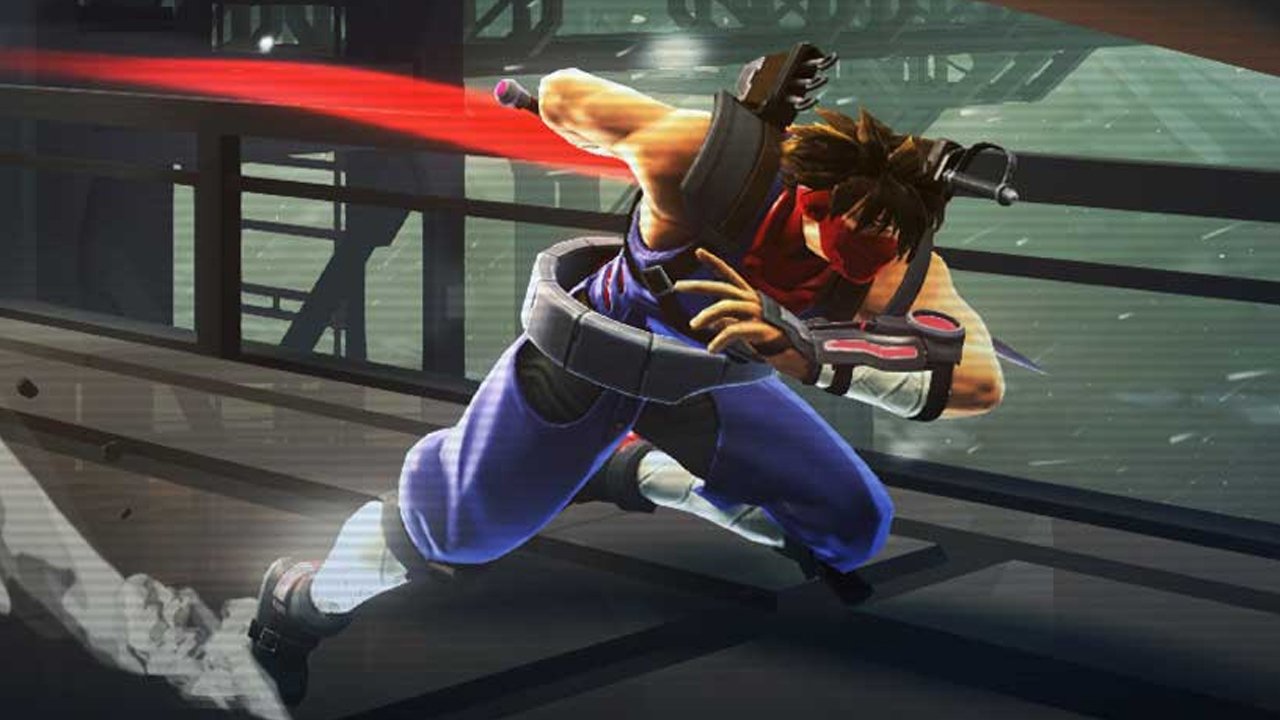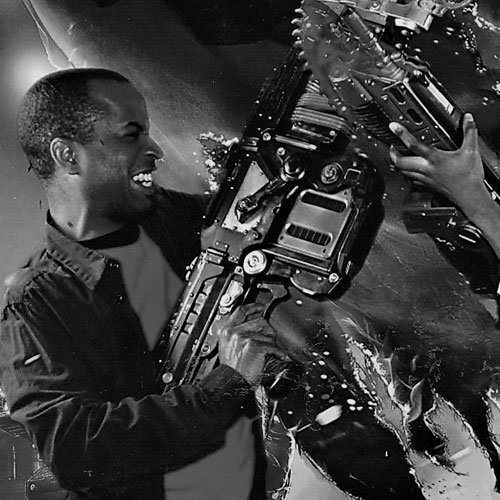Capcom’s Strider was one of the arcade coin-op action games instrumental in solidifying my hobby as a console gamer. It begat two popular console games of the same name; one a near-perfect, ‘killer app’ port on the Sega Genesis that introduced me to the world of 16-bit gaming, the other an 8-bit ‘Metroidvania’-style platformer on the Nintendo Entertainment System which drew me into its story and world far deeper than Metroid and Simon’s Quest ever managed to do. So you can imagine how delightful it is to play a modern take on this classic game that not only incorporates both versions in equal measure but also refines them to a point as sharp as the cypher-blade wielded by its protagonist, Strider Hiryu.

As in the original arcade game, the player as Hiryu must assassinate the evil overlord, Grandmaster Meio, slashing his way through the belly of the dystopian, Soviet Union-inspired city of Kazakh to get to him. What’s truly impressive is just how much of the classic coin-op developer Double Helix has managed to not just retain but also expand upon. For example, the brief appearances by the unfortunately-named martial artists the Pooh Sisters as well as the Boba Fett-like bounty hunter named Solo in the arcade game have been fleshed out into larger rivalries with Hiryu, culminating in multiple boss battles that are both challenging and satisfying.
In similar fashion, Hiryu has kept all of his trademark acrobatic flair, agility, climbing abilities and ninja-lethality showcased in his debut as well as his cameos in the Marvel vs. Capcom games, but his trademark tools as well as his robotic drone, jaguar and eagle sidekicks have received upgrades that enhance gameplay without slowing down the action. Most notably, Hiryu’s trusted cypher-blade and kunai throwing stars gradually attain a variety of different plasma types though upgrades, which affect their properties in battle as well as unlock new routes of travel and means of traversal. Hiryu’s signature scarf and mask also take on the color of whichever plasma is equipped, making exploration, backtracking and combat simpler, and gamers looking to get the best value for their money will find all of the above elements in spades. Better yet, there’s even a story with half-decent voice acting tying it all together.

Accompanying this deeper, lengthier remake of Strider is a level of difficulty that veterans may find intimidating at first, even in Normal Mode. While player attacks are awarded extra damage for dispatching strings of weaker foes or landing consecutive strikes on tougher enemies without getting hit, only the twitchiest players accustomed to bullet-hell-style games are likely to frequently fill their combo meter early on in the game. This generation’s Hiryu is built to take a pounding, and his foes are experts in giving them, so unless you’ve unleashed a perfectly-timed charge strike, or deflected a barrage of bullets at just the right angle, don’t expect to fell an enemy in a single blow.
And until you’ve unlocked enough abilities, be prepared to absorb additional hits when stunned or knocked down, as the minions of Grandmaster Meio can be relentless. Thankfully, the solid controls live up to the challenge, and before long, even beginners will start to feel like cypher-swinging badasses. What fans will find familiar however is the game’s soundtrack, which features several tracks masterfully remixed from the original arcade and NES titles, and in another nod to the NES classic, the game is filled with hidden collectibles that will have players searching every last unexplored corner for upgrades, concept art and story dossiers. The game simply oozes fan service.

Without question, Strider is worthy of a $15 purchase regardless of the platform it’s on, but on PS4 it’s a solid and welcome addition to the console’s still-anemic game library. More importantly, it’s a testament to the continued appeal of the franchise, and while this is likely the last Strider game to be developed by Double Helix (thanks to their recent acquisition by Amazon), this die-hard fan hopes Hiryu’s next solo adventure won’t be so long in coming.






